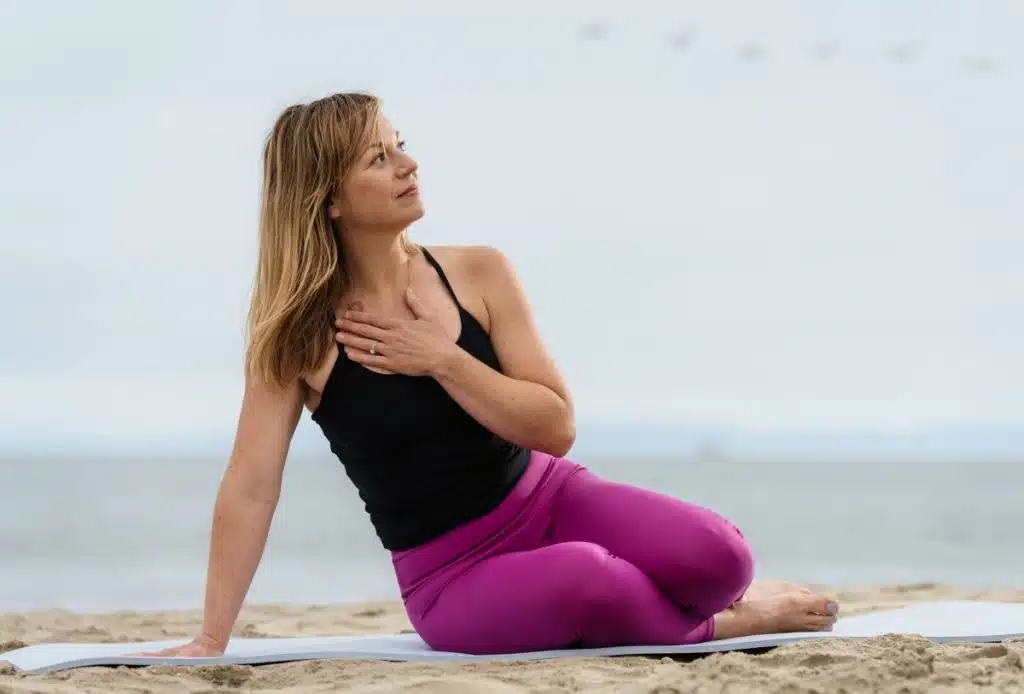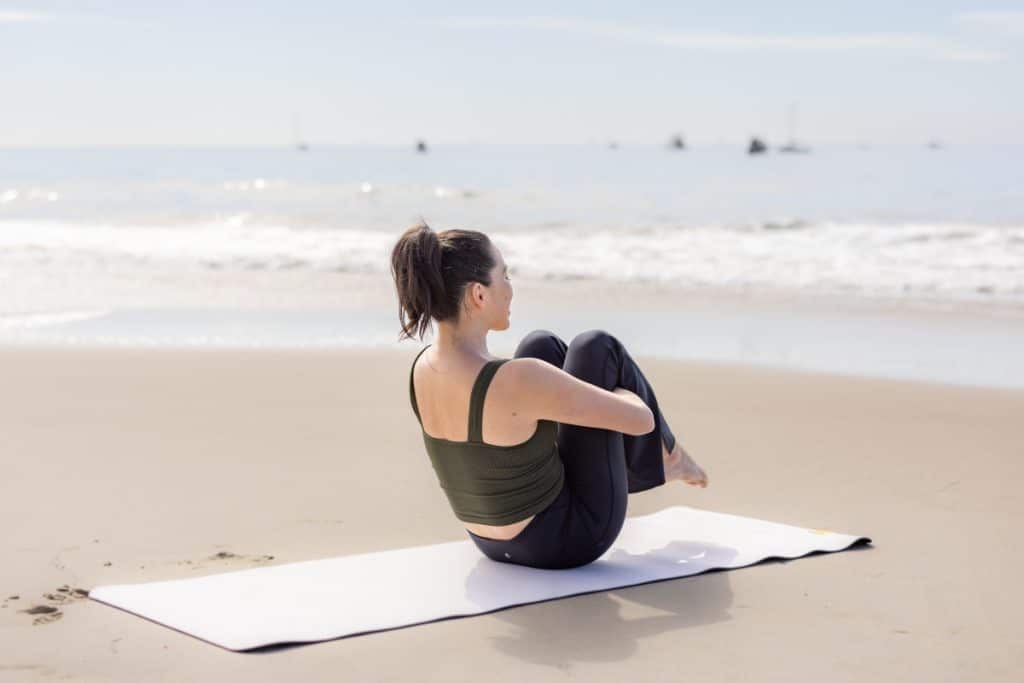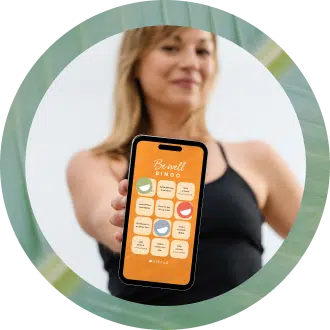
I’m not going to tell you that saying gratitude affirmations is the cure-all for feeling grateful. Quite the opposite. It takes intentional and consistent practice to turn your affirmations into something meaningful and impactful. I talked about this in a recent blog post about cultivating an attitude of gratitude. In doing this, you not only feel more grateful but your mind and body benefit as well.
In fact, research found that those who maintained a consistent gratitude practice at the height of COVID-19 were more likely to exhibit kindness, satisfaction, positive emotions, and interpersonal connectedness. They also had lower rates of depression, anxiety, burnout, or other mental health concerns. There are also correlations between expressions of gratitude and less inflammation in the body, which supports immune function and helps manage the risk of chronic disease.
Gratitude impacts the way you emotionally and mentally experience life too. As I get older, I notice changes that sometimes take me by surprise. Lines that have newly appeared or deepened, the need for more sleep, and digestive changes. While this could spin me out, I’m focused instead on gratitude over anger or frustration. I may not be running marathons like I used to but I am thanking my body for those wonderful marathon years and the core memories.
While gratitude is beneficial to your mind and body, it only works if you come back to it again and again. You’re not going to build physical strength with one workout. The same goes for your gratitude affirmations, so let’s talk about how to create an authentic, intentional practice that nurtures your mind and body.

What Does an Intentional Gratitude Affirmation Entail?
The key to gratitude affirmations is making them authentic and giving yourself space to connect with that feeling (just like with your self-love mantras!)—and doing this regularly, daily if possible.
In other words, this practice isn’t just something you do when you’re feeling good or when you think of it. Gratitude is a mindset you can nurture and, as a result, creates a well of lightness that you can tap into any time—even in moments when you don’t feel like there is much to be grateful for.
That last part is especially important because feeling gratitude when it seems there’s nothing to be grateful for, can feel impossible. When you do this, however, you allow other traits such as empathy, resilience, wisdom, altruism, patience, and humility to take root. This makes you stronger and happier in the long run, two things I know we’re all striving for.
In addition, gratitude can help you move past your pain. You don’t want to bypass the struggles but instead, acknowledge them, and then when you’re ready and have a strong gratitude practice, you may begin to find gratitude within the struggles.
As someone who’s gone through multiple traumatic experiences in my life, I can say that gratitude can be difficult to see during dark times, but it can be found on the other side and that’s a beautiful thing.
Turn Gratitude Into a Daily Practice
If regular, genuine gratitude is key to experiencing the mental and physical benefits, then you need a few different practices to bring this into your daily life. Luckily, there are many opportunities to use, say, and somatically experience gratitude affirmations as you go about your day. Here are a few ideas to start with.
Infuse Gratitude Into Simple Daily Tasks
Gratitude affirmations don’t necessarily have to be elaborate. This really comes down to being more mindful in the small moments and routine activities where we might otherwise miss that sense of gratitude.
For example, you could start the morning with an appreciation for a fresh new day. You could drive to work, notice that there’s less traffic, and recognize the gratitude you have for a quick and easy drive.
You might even place sticky notes on your mirror, fridge, or car dash that says, “What do I feel grateful for right now?” This can act as a gentle reminder to tune into that gratitude when you might otherwise overlook it.
Tune Into the Physical Sensations of Gratitude
Gratitude is not only an experience in your mind. Gratitude affirmations, or simply the experience of feeling grateful, can also evoke physiological sensations such as heart rate or blood pressure fluctuations, for instance.
If you have a hard time noticing those sensations right away, however, you can tune into the somatic (body) response of gratitude by intentionally creating it. The goal of this practice is to use your senses as a vehicle to experience the gratitude you might feel without even noticing it.
Here are some examples:
- Smell something that you’re grateful for, like the flowers growing in your front yard.
- Taste something that makes you feel grateful, like a fresh cup of coffee.
- Play a song that brings you gratitude or deep joy, maybe while you’re in the car.
- Touch something that makes you feel grateful, like the soft blanket hanging on the back of your couch.
- Look at something that you’re grateful for, like the sunset after a long day.
Feel that sense of gratitude as you notice it each time. You might notice your heart swells or a smile comes across your face. Most importantly, let this be playful and release all expectations. As a bonus, making time for play as an adult has many benefits to the mind and body so it’s a win-win!
Reflect With a Gratitude Journal
Don’t just think about your gratitude affirmations, but journal them. Not only does journaling create an intentional space to reflect on what fills you with gratitude more extensively, but when you write something called “encoding” happens.
Encoding is the process in which what you perceive travels to your brain where it’s analyzed, stored, or discarded. This gives your affirmations a better chance of being remembered, rather than simply existing as a fleeting thought.
Here are some questions you can use to get started with your gratitude journaling:
- What are three specific items I am thankful for right now?
- What have I seen today that was beautiful or inspiring?
- What has someone done for me that left a meaningful impact?
- What person can I reach out to with a “thank you” note, call, or text?
Practice Gratitude With Breathwork
Gratitude affirmations and breathwork are a natural pairing. During breathwork or even meditation, you’re anchored in the present, allowing you to soak in gratitude with no distractions.
While you can do this with a longer breathwork session, you can also keep it simple with a quick practice, like the 3-4-5 breath practice. To infuse it with gratitude, focus on one thing you’re grateful for as you inhale, hold, and exhale. You may even want to inhale what you’re grateful for and exhale anything that’s causing you stress or frustration.
Practice breathwork and gratitude with me during Exhale Hour, a live, guided breathwork session! If you’re new to this practice, a guided session is the perfect way to dip your toes in the water and experience how incredible it can be.
Create Your Own Daily Gratitude Affirmation Practice
The beautiful thing about all of this is there’s no one or right way to do it. You can pair your gratitude affirmations with a different practice every single day depending on what you have time for or what feels good for you. What matters most is that you come back to it again and again. Making gratitude a regular part of your life will allow it to become more natural and automatic over time, filling your world with gratitude and love every day, even the hard ones.










2 thoughts on “How to Turn Gratitude Affirmations Into a Powerful Daily Practice”
Thank you.
This is a great way to begin the week. We tend to take life and things for granted. Being grateful in even the smallest things will reset my whole well being.
So glad that this resonated for you!